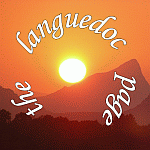 |
An American in the French Languedoc Separating the Pros From PoseursArt is a subjective preference. The business of fine art is a confusing and difficult trade from the perspective of creator, seller and buyer. I’ve been a professional artist for over a decade, exhibited in major galleries and exhibitions, credibly sold my work, written, advised and conducted seminars on the subject. I remain confounded by its complexity. The diverse panorama of the art industry is a labyrinth of conflicting scholarship and marketing propaganda, rumor and investment intrigue. Behind every piece of original artwork is ultimately an artist. As a practicing member of this eccentric fraternity, I can assure you my peers are as diverse as their creations. Flamboyant dress, facial hair and varied tattoos may characterize a popular perception of artists, but typically represent masquerading poseurs with minimal talent and even less output to substantiate their status. Professional artists possess a compulsion to create and express. Whatever medium a serious artist pursues, most professionals are committed and passionate about their work, even (and sometimes especially) if it defies conventional expression, popular design, opinion, and logic. Most artists create their own conceptual worlds, which their creations validate. A legitimate artist has a track record of completed work. Auction houses, International Art Fairs, Galleries and increasingly the Internet have emerged as the primary influences in shaping the contemporary art market. It is a business cemented by professional relationships where substantial amounts of collector money exchange pockets amongst a distinct minority of artists and resellers. Prior to the Second World War, Paris was the undisputed center of the art universe. The Post War Abstract Expressionist movement shifted the axis to New York and Paris has been chasing the canine’s tail since. Within France, Paris and the Cote D’Azur remain the commercial art centers, but the concentration of domestic and foreign talent is diffused throughout the provinces. The Languedoc-Roussillon is well represented in both creative and selling outlets. The regional art cosmos can be quartered into four distinct categories: Public Collections, Commercial Art Galleries, Art Fairs and Festivals and Open Artist Studio Programs. Public Collections The French Revolution insolently exposed traditionally cloistered bourgeois and clergy owned art collections into the public viewing domain. Today, each major urban center and many villages feature public viewing outlets with rotating exhibitions. Among the notable public collections include: Carré Ste-Anne, Musée Atger and Fabre (Montpellier), Chapelle des Capucins (Aigues-Mortes), Chateau l’Hospitalet (Narbonne), Collections de Saint-Cyprien (Saint-Cyprien), Le Centre d'Art Contemporain and Musée des Beaux Arts Hyacinthe Rigaud (Perpignan), Le Centre Régionale d’Art Contemporain and Musée Paul Valéry (Sète), Lieu d’Art Contemporain (Sigean), Musée d’Art Moderne de Céres (Ceret), Médiathèque Max Derruau (Capestang), Musée d'art et d'histoire (Narbonne), Musée des Beaux-Arts (Carcassonne), Musée des Beaux-Arts (Béziers), Musée d'Art Contemporain (Sérignan), Carré d'art and Musée d'Art Contemporain (Nîmes). Commercial Art Galleries Traditionally stationed within urban and tourist frequented storefronts, most Languedoc galleries boast a comfortable viewing environment, reasonable pricing and direct access to their artists via scheduled exhibition openings called Vernissages. Some of these galleries are municipally or regionally funded thus less dependant on artwork sales revenue. The caliber is varied from the inspired amateur to the internationally recognized professional. Some of the more prominent regional galleries include: Galeries AD and Boris and Espace Riquet (Bezier), Galeries ALMA, Vasistas, Espace Créativa, l’Ancien Courrier, Hélène Trintignan, J-C. Reno, Jacques Coeur, Jean-Yves Franch-Fort, Saint-Ravy, Toubkal, GM and Art Passion and Espace Baloard (Montpellier), Galeries Castan, Therese Roussel and Pinet de Gaulade (Perpignan), Galeries Anne Cros, l’Hôtel de Wicque and Didier Vesse (Pézenas), Galerie Esca (Milhaud), Galeries Europ’Art, Z and De la Reine and AZ Arts (Aigues-Mortes), Galerie Gogat (Lattes), L’Agence Galerie (Clermont), D’Art de Nîmes and Galeries Des Arts, Artotheque Sud and La Vigie (Nîmes), Greenwich Village (Lagrasse), La Maison des Arts (Bages), Maison Gibert (Lézignan), Galeries Artus Diffusions, Cora and Tara (Uzes), Galeries D’Art Contemporain L’Arc, 15, Artopi and Terre et (Alès) and Galerie Blend Barry (Collioure). Additional secondary outlets for purchasing artwork likewise include antique and brocante shops and weekend Vide Greniers (Flea markets/Carboots). Art Fairs and Festivals These multi-day affairs, scheduled annually are an excellent opportunity to view a larger concentration of artists and galleries. Admission fees are nominal and the artists are frequently present for the duration. During the summer months, numerous village cultural organizations sponsor individual and collective artist exhibitions, generally with complimentary admission. Art Sud Design (Sanary-sur-Mer), Foire Internationnale d'Art Contemporain, Nîmagine Foire (Nîmes), MIAM 23 (Sète), Salon d’Automne de La Grand Motte (La Grande Motte), Salon des Arts (Port La Nouvelle) and Salon International des Arts Plastiques (Beziers). Open Artist Studio Programs The concept of enhancing the accessibility of art between creator and buyer has been further heightened by Artist Open Studio programs, where artists literally open their create spaces to visiting guests on an annual basis. Some of these programs are sponsored collectively in a single regionally accessible exhibition space. Within tourist-dominated villages such as Lagrasse and Collioure, numerous artists open creative storefronts and establish open-air marketplaces of their work on a variety of themes.
Marques VickersMarques Vickers uprooted from Northern California to the Languedoc region of southern France in June 2005. He currently resides in the wine village of Montseret. This article is protected by all international copyright agreements, and reproduction is prohibited without permission of the author. |
![]()

